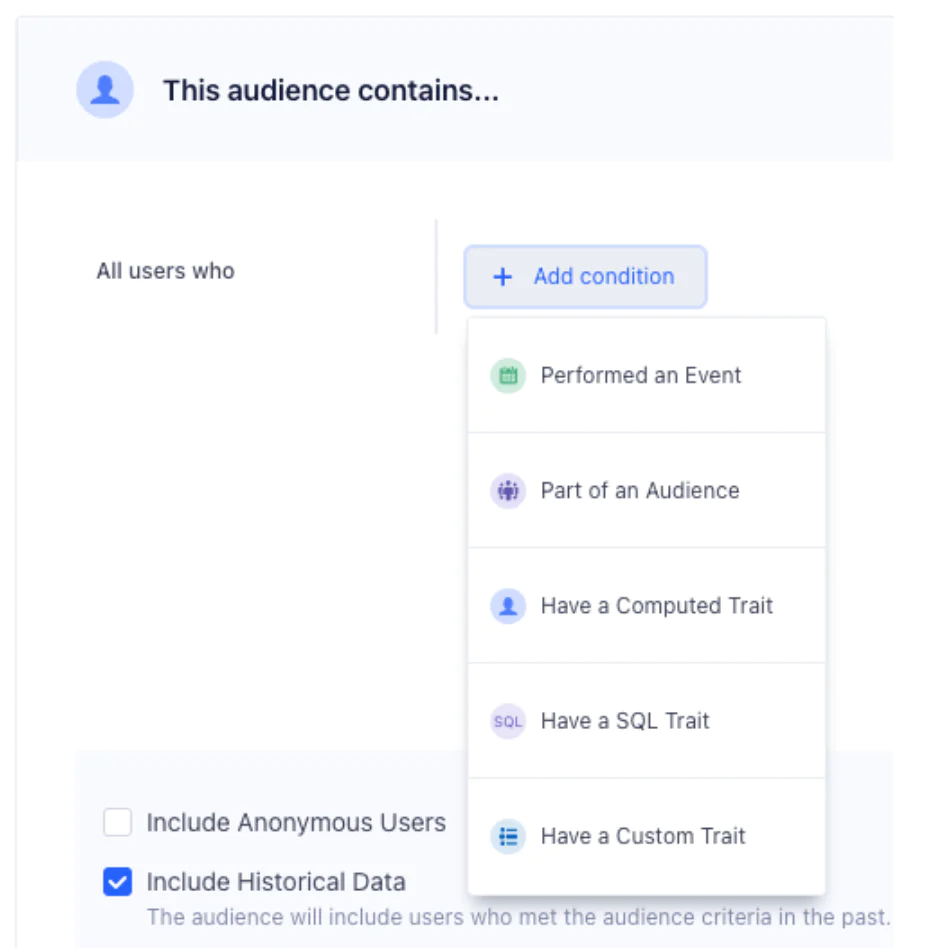How to accelerate time-to-value with a personalized customer onboarding campaign
Time to read:
How to accelerate time-to-value with a personalized customer onboarding campaign
Customer acquisition often takes the spotlight in growth discussions, but customer retention can be just as vital (and more cost effective). Throughout the onboarding process, it’s important to focus on quickly delivering value, monitoring customer health, and spotting expansion opportunities.
At Twilio Segment, we understand that customer acquisition is just the beginning. The true challenge—and opportunity—lies in nurturing these relationships to accelerate both immediate and long-term value.
To help you get started, this blog post will explore insights from Twilio Segment experts on how to build personalized onboarding campaigns to enhance product adoption, improve retention, and leverage customer feedback to boost engagement.
Personalizing onboarding for immediate activation
The goal of onboarding isn't merely to introduce new users to product features; it's to make them see the intrinsic value of these features as swiftly as possible. This rapid realization of value—what we refer to as 'time-to-value'—is crucial because the data show that quicker activation leads to a substantial increase in lifetime value.
In practical terms, this means creating onboarding programs that are not only comprehensive but also tailored to the specific needs and behaviors of different user cohorts. In the next section, we’ll discuss how Twilio Segment can be used to build these personalized journeys, ensuring that your customers adopt the most relevant features of your product right from the start.
Optimizing engagement with real-time audiences
With Twilio Engage, companies can deliver data-driven personalization and drive efficient growth through the power of a Twilio Segment’s customer data platform (CDP) and Twilio’s native multichannel together in one solution. This includes the ability to build real-time audiences and set up onboarding journeys that not only welcome users but also set the foundation for a long-term relationship with your product.


In Engage, an Audience is a group of users that share certain characteristics. When you create an Audience, you group users who meet certain conditions, like having performed an event or having a Computed Trait.
For the purposes of this guide, we’ll show you how to build an audience of new Business-tier customers who have yet to take any meaningful action within your product. Because our objective is to accelerate time-to-value, this criteria is aimed at the lowest-hanging fruit for you to deliver a timely onboarding experience for this high-value, easy-to-target audience.
A step-by-step guide to build an effective onboarding campaign
Now that we’ve established how personalized onboarding can accelerate time-to-value and improve retention, let’s break down each step involved in building an effective campaign:
Step 1: Decide on goals and metrics
This foundational step involves aligning with stakeholders to pinpoint what you want to achieve through your onboarding campaign. This could be improving user activation rates or reducing the time it takes for a new user to find value in the product.
It’s essential to begin here because operationalizing the objectives of your campaign and the metrics you use to measure success will help you tailor your strategy accordingly and maximize results.
Step 2: Decide on events, properties, and traits
The next step is understanding the data needed to support your goals. This includes identifying who your target users are, determining the necessary data points to understand their behavior, and deciding where this data will be sourced from.
The three key questions to ask at this point are: 1. Who are the users that I am most interested in targeting?
As alluded to earlier, for this exercise we suggest New Business account users i.e. users from Business-tier customer accounts who have yet to take meaningful action in your product.
2. What are the underlying data points I need to target these users?
Again, this can vary based on your stated goals and metrics but for this exercise we need the following data points:
If user belongs to customer account that was upgraded in the last 10 days
If customer account is of the type “Business”
If user has not yet taken any “onboarding actions” such as completing a tutorial, filling out their profile, or deploying a sample app
3. Where (from which data sources) are these data points generated?
There are two sources you can use to collect the data required for this campaign. The first is your Web App source in Twilio Segment. Events like account creation, a user signing in to your platform, or completing a tutorial will come directly from your Web App after implementing a Twilio Segment tracking code.
|
Event |
Description |
Audience criteria |
|---|---|---|
|
"User Account Created" |
Fires when the user first creates an account in the app |
Performed this event at least once |
|
"Signed In" |
Fires each time the user has signed in to the app |
Performed this event at least once |
|
"Tutorial Completed" |
Fires when a user completes the onboarding tutorial |
Have not yet performed this event |
This is not a complete picture, however, of the information required to build your audience. You will also need data from your internal CRM, billing, or warehouse tools such as user_id or plan_type. Remember, we are targeting “Business-tier” customers, so plan_type and account_upgraded_date are traits required for us to accurately target our campaign to relevant users.
|
User attribute (trait) |
Description |
Audience criteria |
|---|---|---|
|
user_id |
Unique identifier for user |
Required field |
|
|
Email address where campaign email will be sent |
Required field |
|
plan_type |
"Type" of customer account the user belongs to ("Free", "Team" or "Business") |
Value = "Business" |
|
professional_services_included |
"TRUE" or "FALSE" if the user’s customer account includes additional services |
(Optional) Value = "TRUE" |
|
account_upgraded_date |
Date of last account upgrade |
Date within last 7 days |
Step 3: Build your audience
The next step involves the practical setup of your campaign on the Twilio Segment platform. This includes configuring the necessary data tracking within Twilio Segment to build your target audience and trigger a personalized onboarding experience.


With Engage, you can use the audience builder to create a new audience based on the traits, events, and properties highlighted above. For this campaign we want to include all users who have a plan_type that equals Business, have an account_upgraded_date within the last 10 days and have performed a Signed in event at least 1 time.
Because our goal is to activate new, high-value customers that have not completed onboarding for your product we also need to add a separate condition of (And not who…) to exclude users that have performed the event Tutorial Completed at least 1 time.
Step 4: Execute your campaign with a personalized message
Now that we have our audience, it’s time to send a timely message to encourage the action associated with your desired outcome. Using Twilio Engage you can deploy this message on any of our native channels (email, SMS, WhatsApp) or to any of our 700+ apps. For instance, you might send this audience downstream to an email tool like Customer.io or a customer success platform like Zendesk.
For reference, here is an email our CS team might send to a new user suggesting they either A) begin a tutorial through Twilio Segment University or B) install the analytics.js library and code required for event tracking.


Leveraging NPS for deeper customer insights
Congratulations! You’ve built your first customer onboarding campaign with Twilio Segment. Now, how do you measure success?
One effective strategy is using a Net Promoter Score (NPS) to gauge ongoing satisfaction and predict retention. Your NPS serves as a critical feedback tool that helps the team understand the value customers derive from your product beyond the initial onboarding phase. This feedback loop is essential for forecasting retention and preemptively addressing potential issues before they impact renewal discussions.
In our experience, just a few small tweaks in the onboarding process can dramatically improve activation rates and increase NPS response rates, indicating higher customer engagement and satisfaction.
Using NPS Surveys to boost growth and reduce churn
In this recipe, you’ll learn how to leverage NPS to boost growth and reduce churn with personalized NPS follow-up email campaigns.
Get step-by-step instructions here.
By utilizing the steps outlined—from setting clear goals, understanding your data, building targeted audiences, and executing personalized campaigns—you can ensure your new users are not only welcomed but are also set on a path of continuous engagement and satisfaction.
With the integration of NPS surveys, you can further refine your approach by capturing critical feedback that can guide future customer experience strategy. Start implementing these insights today, and watch as your onboarding campaigns transform new users into loyal advocates for your business.
Ready to see what Twilio Segment can do for you?


The Customer Data Platform Report 2025
Drawing on anonymized insights from thousands of Twilio customers, the Customer Data Platform report explores how companies are using CDPs to unlock the power of their data.
Related Posts
Related Resources
Twilio Docs
From APIs to SDKs to sample apps
API reference documentation, SDKs, helper libraries, quickstarts, and tutorials for your language and platform.
Resource Center
The latest ebooks, industry reports, and webinars
Learn from customer engagement experts to improve your own communication.
Ahoy
Twilio's developer community hub
Best practices, code samples, and inspiration to build communications and digital engagement experiences.


